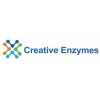Cat No.
NATE-0677
Description
Superoxide dismutases (SOD) are enzymes that alternately catalyze the dismutation (or partitioning) of the superoxide (O2?) radical into either ordinary molecular oxygen (O2) or hydrogen peroxide (H2O2). Superoxide is produced as a by-product of oxygen metabolism and, if not regulated, causes many types of cell damage. Hydrogen peroxide is also damaging, but less so, and is degraded by other enzymes such as catalase. Thus, SOD is an important antioxidant defense in nearly all living cells exposed to oxygen. One exception is Lactobacillus plantarum and related lactobacilli, which use a different mechanism to prevent damage from reactive (O2?).
Abbr
SOD, Native (Canine)
Alias
SOD
Source
canine erythrocytes
Species
Canine
Form
lyophilized powder
Enzyme Commission Number
EC 1.15.1.1
Bio-activity
2,000-6,000 units/mg protein
CAS No.
9054-89-1
Molecular Mass
mol wt ~31.2 kDa (two identical subunits)
Composition
Protein, > 90% biuret
Unit Definition
One unit will inhibit reduction of cytochrome c by 50% in a coupled system with xanthine oxidase at pH 7.8 at 25°C in a 3.0 mL reaction volume. Xanthine oxidase concentration should produce an initial ΔA550 of 0.025 ± 0.005 per min.
Stability
?20°C
Gene Name
SOD1 superoxide dismutase 1, soluble [Canis lupus familiaris]
Synonyms
EC 1.15.1.1; 9054-89-1; SOD; Superoxide:superoxide oxidoreductase; Superoxide Dismutase
GeneID
403559
mRNA Refseq
NM_001003035
Protein Refseq
NP_001003035
UniProt ID
Q8WNN6
Chromosome Location
chromosome: 31
Pathway
Amyotrophic lateral sclerosis (ALS), organism-specific biosystem; Huntington's disease, organism-specific biosystem; Peroxisome, organism-specific biosystem
Function
metal ion binding; superoxide dismutase activity





